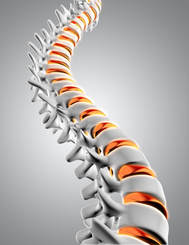What is Cold Laser Therapy?
Cold laser therapy has been used since the early 2000’s as a non-invasive treatment that uses low-intensity lasers to stimulate cellular function. The benefits include pain relief, tissue healing, reduced inflammation, improved flexibility, and enhanced recovery and athletic performance. Plus, it is generally considered a safe and non-invasive therapy with minimal side effects. It is typically well-tolerated, and the treatment sessions are relatively short.
What Does Cold Laser Therapy Treat?
Cold laser therapy, has been studied for its potential effectiveness in treating various sports injuries, joint problems, and tendon issues.. While research in this area continues to evolve, there is evidence suggesting that LLLT may be beneficial for the following conditions:
Sports Injuries and Tendon Issues
Joint Problems:
Why is the new Pulsed Laser technology so advanced?
Our office has the Lumix Q, which features the most advanced pulsed laser technology available today. The results are incredible.
Pulsed Nd:YAG (neodymium-doped yttrium aluminum garnet) lasers are often preferred for musculoskeletal applications due to their ability to achieve better penetration into deep tissues compared to some other types of lasers. Several factors contribute to their effectiveness in musculoskeletal therapy:
Cold laser therapy has been used since the early 2000’s as a non-invasive treatment that uses low-intensity lasers to stimulate cellular function. The benefits include pain relief, tissue healing, reduced inflammation, improved flexibility, and enhanced recovery and athletic performance. Plus, it is generally considered a safe and non-invasive therapy with minimal side effects. It is typically well-tolerated, and the treatment sessions are relatively short.
What Does Cold Laser Therapy Treat?
Cold laser therapy, has been studied for its potential effectiveness in treating various sports injuries, joint problems, and tendon issues.. While research in this area continues to evolve, there is evidence suggesting that LLLT may be beneficial for the following conditions:
Sports Injuries and Tendon Issues
- Sprains and Strains: LLLT has shown promise in accelerating the healing process for muscle and ligament injuries, such as hamstring strains, ankle sprains, and quadriceps strains. It can help reduce pain, inflammation, and swelling.
- Tennis Elbow (Lateral Epicondylitis): Research indicates that LLLT can alleviate pain and improve function in individuals with tennis elbow, a common overuse injury among athletes.
- Golfer's Elbow (Medial Epicondylitis): Similar to tennis elbow, LLLT may be effective in reducing pain and promoting healing in golfer's elbow.
- Rotator Cuff Tendinitis: Cold laser therapy may benefit individuals with rotator cuff tendinitis by reducing pain and inflammation in the shoulder joint.
- Plantar Fasciitis: LLLT has been studied for its potential to alleviate the pain and discomfort associated with plantar fasciitis, a common foot condition characterized by inflammation of the plantar fascia.
- Tendinopathy: Tendinopathy refers to conditions like Achilles tendinopathy and patellar tendinopathy, which involve chronic tendon pain and dysfunction. Research has investigated LLLT as a potential therapy to reduce pain, improve tendon structure, and enhance function in these conditions.
Joint Problems:
- Osteoarthritis: LLLT has been investigated as a treatment option for osteoarthritis in various joints, including the knee and hip. Research suggests that it can help reduce pain, improve joint function, and increase mobility in individuals with osteoarthritis.
- Rheumatoid Arthritis: Some studies have explored the use of LLLT in managing joint pain and inflammation associated with rheumatoid arthritis. It may contribute to symptom relief and improved quality of life.
Why is the new Pulsed Laser technology so advanced?
Our office has the Lumix Q, which features the most advanced pulsed laser technology available today. The results are incredible.
Pulsed Nd:YAG (neodymium-doped yttrium aluminum garnet) lasers are often preferred for musculoskeletal applications due to their ability to achieve better penetration into deep tissues compared to some other types of lasers. Several factors contribute to their effectiveness in musculoskeletal therapy:
- Longer Wavelength: Nd:YAG lasers typically emit light at a longer wavelength (1064 nanometers) compared to other medical lasers. Longer wavelengths can penetrate deeper into tissues because they are less absorbed and scattered by skin and superficial tissues. This characteristic makes Nd:YAG lasers well-suited for treating musculoskeletal structures located deeper within the body.
- High Peak Power: Pulsed Nd:YAG lasers deliver laser energy in short, high-energy pulses. This high peak power allows them to reach deeper tissues by overcoming scattering and absorption effects. As a result, they can effectively target muscles, tendons, ligaments, and other musculoskeletal structures.
- Controlled Thermal Effects: While Nd:YAG lasers generate heat, they do so in a controlled manner. The short pulse duration limits the time that tissues are exposed to heat, reducing the risk of thermal damage to surrounding structures. This is crucial for ensuring safe and effective treatment of musculoskeletal conditions.
- Targeted Energy Delivery: The ability to precisely focus the laser energy on specific areas of concern within the musculoskeletal system allows for targeted treatment. This can be particularly important in addressing issues like muscle strains, tendonitis, and ligament injuries.
- Stimulated Healing: Nd:YAG laser therapy has been shown to promote tissue healing and reduce inflammation. It can stimulate cellular processes that accelerate the repair of musculoskeletal injuries, leading to faster recovery and pain relief.
- Non-Invasive: Nd:YAG laser therapy is non-invasive, making it an attractive option for patients seeking pain relief and recovery without the need for surgery or medications.

